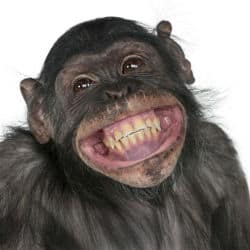Study Finds Monkeys And Humans Perceive Illusions In The Same Way

Results of a new study suggest that monkeys perceive visual illusions in much the same way as great apes and humans do. According to the research both humans and monkeys internalise the world in a similar fashion which reflects resemblances in the way these species interpret the world they live in. The study examined rhesus monkeys and capuchin monkeys, finding that both saw the Delbouef illusion in the same way adult humans did.
The Delbouef Illusion
The Delbouef illusion involves a dot that is surrounded by a large ring which humans perceive to be smaller than a same sized dot that is surrounded by a small ring. This is because the ring constructs a context in which the dots are perceived. Most visuals illusions use this technique, which involves presenting information that gets misperceived on the basis of presentation style or surrounding context.
Computerised testing
The particular illusion that was used in the study has been examined in humans extensively but has only been presented to animal species on only one previous occasion. Audrey Parrish who conducted the research said the results clearly show that monkeys and humans do share similarities in their perceptual systems. The researchers undertook two computer experiments with monkeys and adult humans. The humans were tested at computer workstations and were rewarded for their correct answers with written feedback. The monkeys were first trained to use joysticks so they could also be tested using computers and were rewarded for correct answers with banana-flavoured pellets.
Researchers had to run two experiments
The monkeys and humans were then asked to choose the larger of two central dots that on different occasions were surrounded by a Delboeuf ring. Humans perceived the illusion routinely overestimating central dots when they were surrounded by small rings and underestimating the size of the dot when a big ring surrounded it. The monkeys however did not show any evidence that they perceived the illusion in the same way so the researchers ran a second experiment.
Humans and monkeys performed the same
The second experiment involved humans and monkeys playing a computer game which required them to classify a central dot as big or small. On some occasions the dot was surrounded by a thin ring of variable size. The results suggest that both species perceived the Delboeuf illusion. The monkeys like humans categorised dots that were shown in large rings as being small more often than the same size dot was shown inside small rings. The results clearly show that the context created by the ring which should have been ignored does indeed generate a visual illusion for both monkeys and humans.



